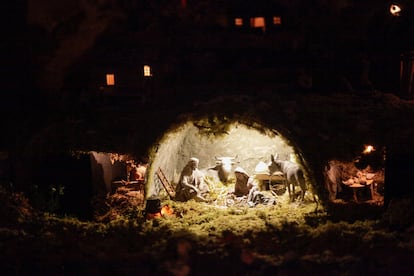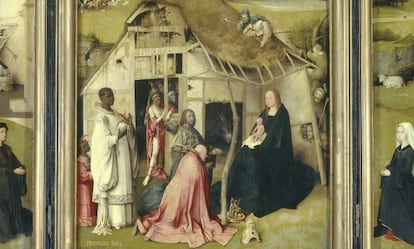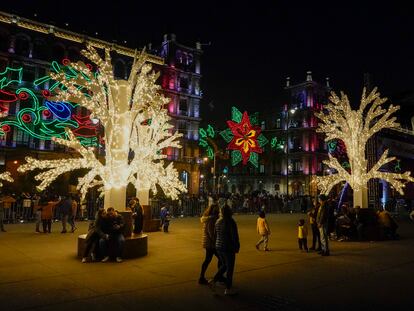The history and myth of Christmas: Why the canonical Gospels tell us almost nothing about the birth of Jesus
Regardless of one’s faith, the importance of the Nativity lies in the strength of its symbolism, not the accuracy of the accounts provided by the apostles

Every year during the holidays, the main cast of Christmas characters – Baby Jesus, the Virgin Mary, the mysterious and obscure Joseph – come out of the woodwork, along with all the real, mythical and symbolic figures and events that surround them – the shepherds, the Three Kings, King Herod, the flight to Egypt and the Massacre of the Innocents. But really, we know almost nothing for certain about them, and that includes the birth of Jesus himself. Why do the origins of a figure of such global historical importance as Jesus Christ, the founder of the world’s largest monotheistic religion, Christianity, remain such a mystery?
While the four canonical Gospels – those officially designated by the Roman Catholic Church as true – are filled with detailed accounts of the crucifixion and death of Jesus, only two of them, Matthew and Luke, mention his birth. And even these accounts offer only minor references to the event, and tell us nothing of his childhood. The origin of popular conceptions of the birth of Christ, and the traditions that commemorate it – starting with the names of the Three Kings, who were not actually kings, but magi (Melchior, Gaspar and Balthasar) as well as the events surrounding Mary’s immaculate conception – come from the apocryphal gospels, that is, those accounts of the life of Jesus that the Church has discarded and considers false or embellished.
Christians, however, have long celebrated the purported date and place of Christ’s birth, and continue to do so to this day. Catholic popes, faced with the silence of the canonical Gospels on the question of Christ’s birth, chose to co-opt and Christianize the ancient pagan holiday of Saturnalia. A series of legends, symbols, and traditions evoking feelings of family joy thus arose around those dates in late December, when Jesus’s birth was enveloped in mantle of divine protection against the wrath of King Herod, who feared that the child, seen as the successor to King David, might endanger his grip on his power.

Other details also arose surrounding the journey of Mary, pregnant with her immaculately conceived child, and her husband Joseph, who had to travel to the city to register for the Roman census, and how Mary then gave birth to the Son of God in a cave, in a manger of animals, surrounded by angels and shepherds, and how the three magi arrived, guided by the Star of Bethlehem.
Today, however, we know from Roman historical records that on the date in question, there was no census forcing Joseph and Mary to travel to Bethlehem, and that the details of their trip and subsequent flight to Egypt – to escape Herod, who, so the story goes, had ordered the sacrifice of all children under the age of two in an effort to kill Jesus – is pure legend.
A manger without oxen or donkeys
Even Pope Benedict XVI, the Bavarian theologian born Joseph Ratzinger, who had a reputation for ecclesiastical conservatism, stated in 2013, in an apparent fit of progressivism, that surely there were neither oxen nor donkeys present at Jesus’s birth.
In those times, people were named either after their father or their place of birth. And in the four canonical Gospels recognized by the Church, Mary’s son is always called “Jesus of Nazareth,” never “Jesus of Bethlehem,” which indicates a consensus among early Christians that Mary gave birth in Nazareth.
While biblical experts agree that the events surrounding the birth of Jesus are mostly the stuff of legend, it is also true that the legends themselves are quite old. To this day, the place where Mary is said to have stopped to breastfeed her newborn child serves as an important place of worship, and pregnant women visit the site regularly, to ask the Virgin for protection.
Does all of this diminish the strength, beauty and passion of the legend of the birth of Jesus, the man who founded Christianity and fought until his death to expand the limits of Judaism and turn it into a universal religion? On the contrary, the legend itself reflects the degree to which early generations of Christians were interested in knowing, or creating, the details surrounding their savior’s birth.
In reality, the four canonical Gospels are nothing more than a collection of stories and sayings attributed to Jesus by his early Christian followers. The texts mix the authentic accounts of the apostles with fictionalized additions to fill in the gaps between major events.
Dozens of other apocryphal gospels emerged in much the same way. Until, at a certain point, the Church decided that only four were authentic and inspired by God, and designated the rest as apocrypha – false accounts with no historical foundation. It is in these apocryphal texts where we find the accounts of the birth and infancy of Jesus, while the canonical Gospels ignore those subjects almost entirely. The canonical accounts focus, above all, on the teachings, crucifixion, death and resurrection of Jesus. It is still not entirely clear what criteria led the popes to select those four Gospels, out of the dozens that circulated among Christians during the religion’s first centuries, as the true accounts inspired by God.
According to modern exegetes, all the literature shared among early Christian communities, from the existence of the figure of Jesus and his family to the reason for his crucifixion, is contaminated by the interpretations of the first Christians themselves, who modified real events and facts to accommodate them to the theological discussions of the time. This was especially the case with the influence of the only apostle who did not know Jesus during his lifetime, Paul the Apostle (previously Saul of Tarsus), whose writings were central to the creation of early Christian theology.
This is why, to this day, and even with the accounts we have from the four canonical Gospels and the writings of Paul the Apostle, it is difficult to distinguish history from myth when telling the early history of Christianity and disentangling it from Judaism and agnostic doctrine. Is it true, for example, as some second-century paintings in the catacombs in Rome suggest, that women served as bishops and could officiate the Eucharist in their homes?
We still do not know, for example, how exactly the four Gospels that the Church considers authentic were originally created. We also do not know who wrote or edited them, nor to what extent, for example, many of the phrases attributed to Jesus are true, or are direct quotes. The canonical Gospels were originally just oral stories told from one Christian to another, and thus transformed along the way, that were eventually written down.
There is consensus among biblical scholars, both Catholic and Protestant, that even some of Jesus’s most famous sayings – “Render unto Caesar the things that are Caesar’s, and unto God the things that are God’s,” for example, or “It is easier for a camel to pass through the eye of a needle than for a rich man to enter the kingdom of God,” – cannot be attributed to him with complete certainty. A few years ago, 12 Catholic and Protestant biblical experts met to analyze sayings attributed to Jesus in the four canonical Gospels, and the outcome was astonishing: only a half dozen or so phrases were unanimously determined to be authentic; the rest remained in doubt.

What, then, is left for Christians who look to history as the basis of their faith, if the very words of their founder, and the story of his birth, death, and resurrection are impossible to verify? They are left with everything, because their belief, by definition, transcends the obstacles of historical truth through the power of their faith, which, as Jesus once said (or did he?), can move even the greatest mountain. Hence, the origins of Christmas, whether history or myth, continue to play an important role in the Christian faith, whose followers imbue these stories with spiritual and human meaning.
Regardless of one’s faith, there is something in Christmas, and in the story of the birth of Jesus and the origins of Christianity – both the history and the myth, and all the grey area in between – that every year inspires strong feelings of love and family in the hearts of both young and old.
And this, too, is why so many feel frustration at the fact that in our modern era of unbridled consumerism, the Christmas holiday now resembles something closer to the wild pagan Bacchanalia of Rome than a moment to honor and memorialize the birth of God’s only son, who came into the world bearing a message of love, humility, and simplicity. Whether the story is history or legend matters little. The importance of Christmas is in the strength of its symbolism, and in the power of happiness that comes from being together with the ones we love, and with our families, in whatever form they come.










































